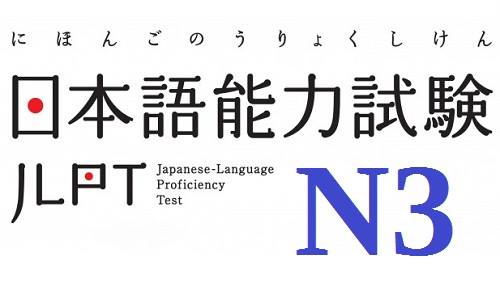JLPT N3 Grammar lesson 21
JLPT N3 Grammar lesson 21. Hi everyone! In this article, Learn Japanese daily will introduce you to the JLPT N3 Grammar.
Let’s take a look at the next 5 structures.
Structure 101 :
N1からN2にかけて
Explanation:
From ~ to ~
Equal to から~まで
For example:
昼から夕方にかけてゲームをした。
Hiru kara yuugata ni kakete geemu wo shita.
I played games from noon to evening.
六月から七月にかけて休みを取ります。
6-gatsu kara 7-gatsu ni kakete yasumi wo torimasu.
I will take a break from June to July.
Structure 102 :
Nにおいて
Explanation:
at the place
Written form of で
For example:
スポーツ大会は東京において行われます。
Supootsu taikai wa Toukyou ni oite okonawaremasu.
The sporting event will be held in Tokyo.
パーティーは私の家において開かれる。
Paatii wa watashi no ie ni oite hirakareru.
The party will be held at my house.
Structure 103 :
たとえ+(Vても/Aいくても/Aなでも/Nでも)
Explanation:
Even if ~ still ~
For example:
たとえ雨が降っても学校に行きます。
Tatoe ame ga futtemo gakkou ni ikimasu.
Even if it rains, I will still go to school.
たとえ忙しくても、おばあちゃんを訪ねます。
Tatoe isogashikutemo, obaachan wo tazunemasu.
Even if I’m busy, I will still visit my grandma.
Structure 104 :
もしかすると/もしかしたら+(V/N/Aい/Aな)普+かもしれない
Note: Nだの、Aだな
Explanation:
Who knows ~, could it be that, perhaps
To show the speaker’s speculation.
For example:
もしかすると、彼は日本人かもしれない。
Moshika suru to, kare wa Nihonjin kamoshirenai.
He might be Japanese.
もしかしたら,鈴木さんは来ないかもしれません。
Moshika shitara, Suzuki-san wa konai kamoshiremasen.
Mr. Suzuki might not come.
Structure 105 :
必ずしも+(V/N/Aい/Aな)普+とは限らない
Explanation:
Doesn’t always mean, doesn’t have to be ~
It’s not always right, to show an exception.
For example:
日本語が話せる人は日本人とは限らない。
Nihongo ga hanaseru hito wa Nihonjin to wa kagiranai.
Those who can speak Japanese are not always Japanese people.
大人の言うことがいつも正しいとは限らない。
Otona no iu koto ga itsumo tadashii to wa kagiranai.
What adults say is not always right.
Above are the JLPT N3 Grammar lesson 21. If there is anything that you find it hard to understand, feel free to common below.
Check out other JLPT N3 Grammar lessons in section: JLPT N3 Grammar